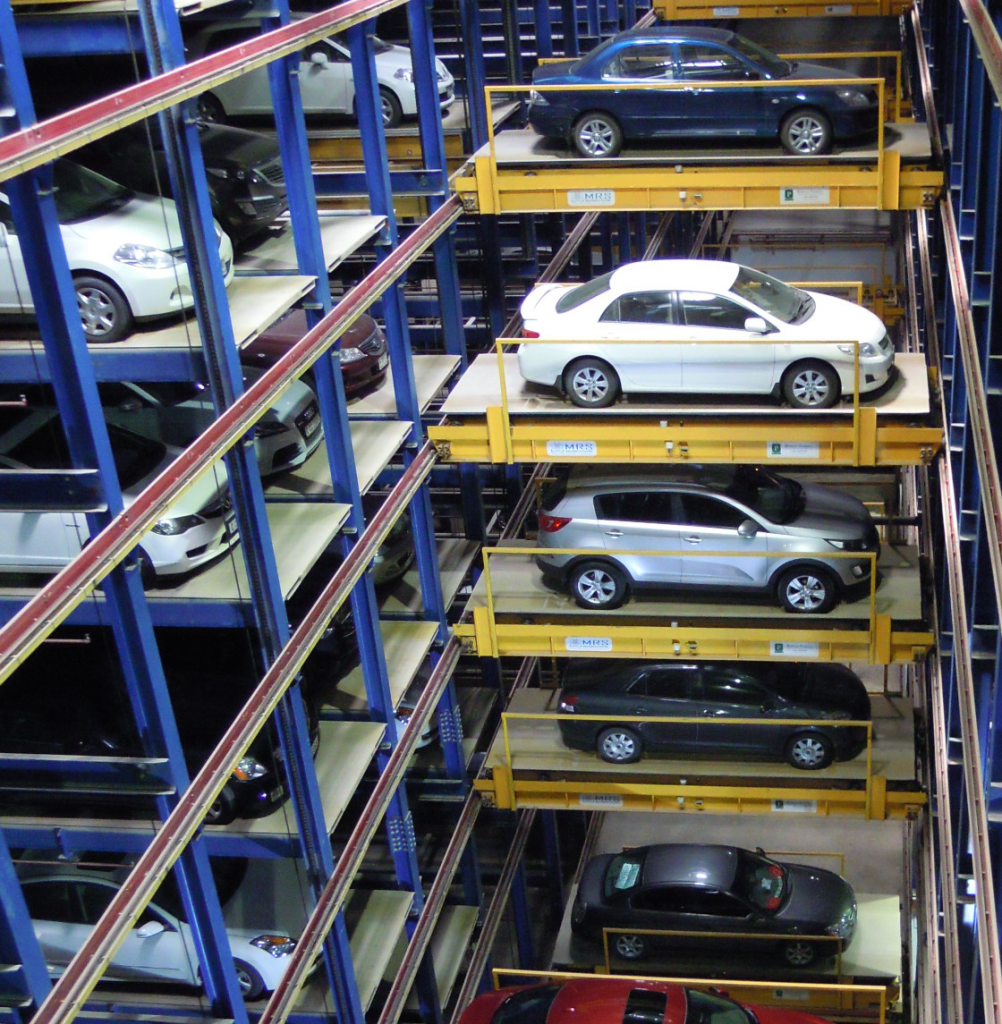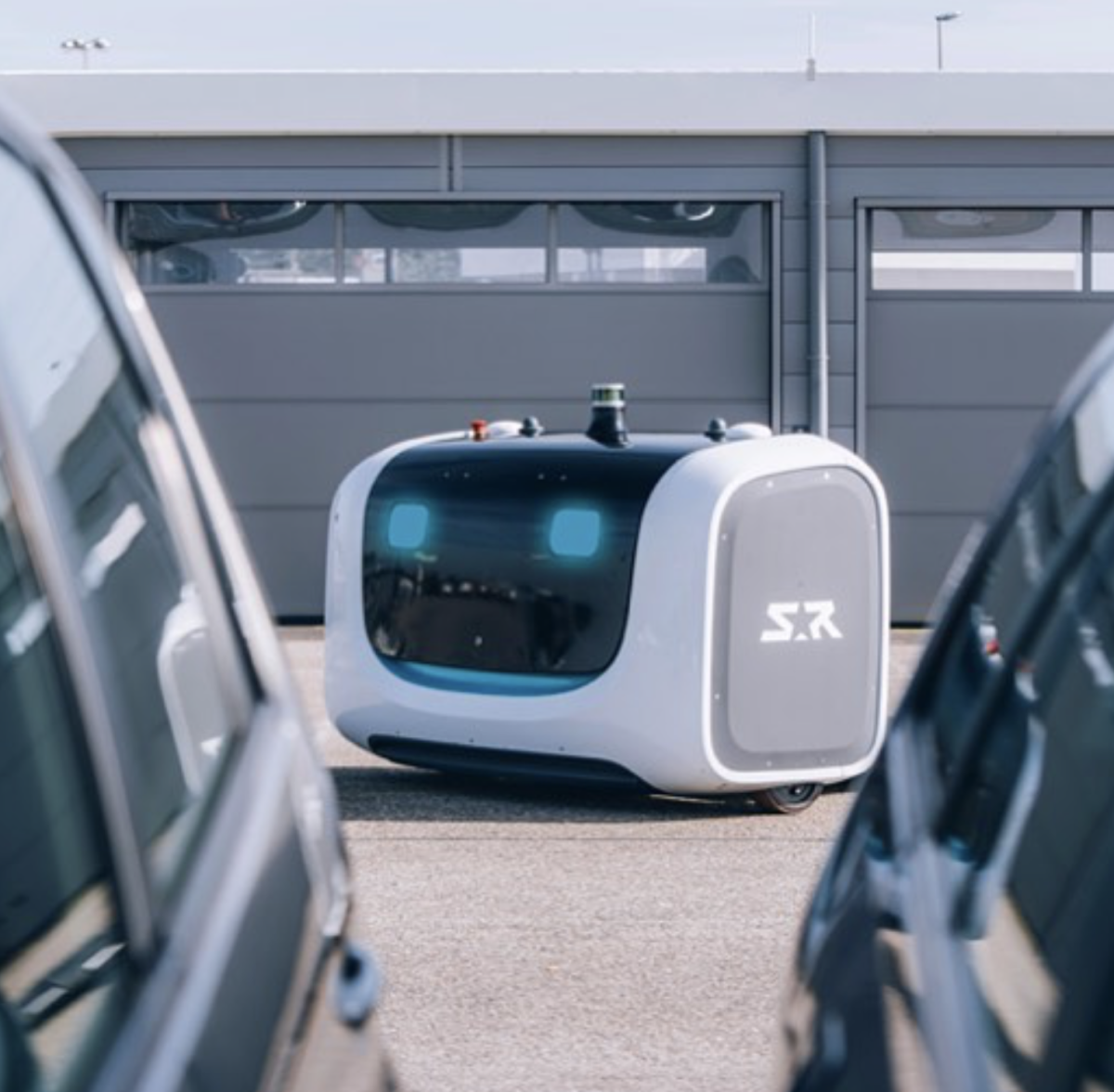Automated Valet Parking – this is a buzzword that appears frequently in the media these days. Press releases from companies promise that we will soon be freed from the task of finding a parking space in a garage. In the future, we will simply leave our cars at the entrance and they will be parked automatically. There are many different technologies competing for this future market. Where do we stand in this evolution? In this article, I will try to give an overview of the current state of the technology.
Introduction
You drive to a parking garage, leave your car outside, and then just walk away. The car finds a parking space by itself and just waits for you to return. When you come back, you call your car and it shows up where you left it. Gone are the days of circling the narrow aisles of a parking garage to find an open spot, then trying to squeeze your car into a tiny space, always careful not to scratch your car or the other cars. Wouldn’t that be great? I would definitely use such a service. The parking garage experience often ruins the end of an otherwise wonderful drive.
With the advent of self-driving cars, car companies and other technology providers are offering to solve this problem for us. Right now, you can only find personal valets at some airports and fancy hotels. They take your keys and, of course, a tip or fee for parking your car.
Automated Valet Parking – AVP for short – promises to bring the same convenience as a valet, but instead of a human, a computer takes over. No more leaving a tip. No more hoping the valet doesn’t take something from your car. And maybe even more affordable.
Automated Valet Parking
Automated valet parking technology is still in its infancy. As a result, we see several different technologies competing with each other. It is not yet clear which one will prevail in the market.
Automakers are proposing two different approaches. They call them Type 1 and Type 2.
Type 1 is the “Intelligent Vehicle” and Type 2 is the “Intelligent Infrastructure” (Source: Continental).
Let’s start with Type 2: Here the car and the parking garage work together. The parking garage is equipped with sensors that not only detect available parking spaces, but also monitor the entire parking garage and can thus detect other obstacles for the self-driving car. The car communicates with the infrastructure via radio, dramatically increasing its sensor range.
In the Type 1 solution, the car does not need these extensions. It can navigate itself to an available parking space, just like a human driver relying solely on his senses.
Level 2 is apparently easier to implement, as it is the only technology that has been demonstrated so far. BMW showed it at the IAA 2021, including automatic charging during parking:
And Daimler and Bosch together even got approval to operate a public parking garage with their proprietary solution (Link). If you own a compatible Mercedes and want to park at Stuttgart Airport, you can probably experience automated valet parking today:
I say probably, because after the first press releases in 2020, I could not find any news about this system, nor could I find any reference to it on the homepage of Stuttgart Airport. If anyone knows if this system is really operational, please let me know.
This gives me the impression that level 1 parking is not really around the corner, and level 2 parking is still in the phase of proprietary solutions, which will hinder widespread adoption. And in any case, you would need a compatible car to use it.
But there is another way for everyone to experience automated parking: Robotic parking.
Robotic Parking
Imagine if your car did not have to park itself, but instead someone would carry it to a parking space. This is the idea of robotic valet parking.
Check out this video from the French company Stanley Robotics (Homepage):
You can see how the robot picks up the car at a garage, lifts it and transports it to a parking lot far away.
This system is already in use at Lyon airport and the company is actively looking for more projects.
Another example is this Chinese company (Homepage). They are building an even smaller robot consisting of two units that can move together or independently. I find this quite amazing!
Robotic Valet Parking works with all cars, even older ones. The intelligence is neither in the car nor in the infrastructure, but in the robot.
The robots could even park the cars very close to each other, using the parking space very efficiently, as we can see in the first video. However, retrieving a car parked further back would require a lot of shuffling of the other cars. So this technology is especially useful where cars are parked for a long time and the return can be planned. I think this is why the first system is being installed at an airport, and Stanley Robotics is also promoting their system for use in car logistics scenarios.
I also saw another kind of robot parking from the company Robotic Parking Systems (Homepage).
Here, drivers also park their cars in special parking garages, but the robot itself is not an autonomous driving robot. Instead, it is a kind of high-bay storage for cars:

The charm of this solution is that the robot itself does not need to be very intelligent, and I think this can be done with existing and robust technologies. But the parking garage has to be built around the mechanism in the center, and this means that the space cannot be used otherwise and existing garages cannot be upgraded. This system has to be planned from the beginning.
Nevertheless, this seems to be the system with the most applications I could find, with examples from the Arabian Peninsula and also from the USA.
Outlook
As I learned, Automated Valet Parking already exists. Most real-world applications of AVP use some form of robotic valet parking. In my opinion, this is the most realistic application for the near future because it works with all types of cars and therefore has the broadest customer base. After all, parking operators want to get a return on their investment, and that works better when they have as many customers as possible.
For the fully self-driving cars, I am a bit skeptical about the Type 2 solutions. Here, the parking operators have to make large investments upfront, and their potential customer base is very limited because there are not many compatible cars yet. And that requires the car industry to agree on a common standard. If every car manufacturer is working on a different technology, I cannot imagine how parking operators will invest in supporting all of them. So if Type 2 is ever going to be widely adopted, such a standard is essential.
However, if car manufacturers can get Type 1 AVP to work reliably, the situation will be completely different. This technology would bring all the benefits to the customer, but no additional revenue to the parking operator. Once Type 1 is in place, any investment in Type 2 parking infrastructure would be useless. In this scenario, only robotic valet parking would have an additional benefit for all customers who do not yet have an autonomous vehicle.
All these points make me very curious about how the technology and the market will develop in the next few years.

2 replies on “Making Parking Great Again – Automated Valet Parking”
[…] then picks you up and takes you home.In this sense, we can think of this idea as a variant of Automated Valet Parking (AVP), scaled up to serve an entire […]
[…] I came across this ingenious use of robots for Autonomous Valet Parking: They can do the work of tow trucks, removing cars from places where they are not allowed to park. […]